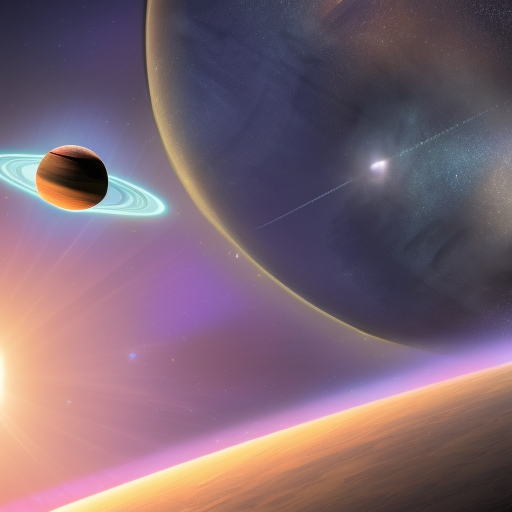
So far the record is two, by the Dawn spacecraft.
Specifically, it must decelerate to the point where it's not on an escape trajectory from that body. The body must be large enough that it can feasibly be orbited.
People are also trading
@IsaacKing it's clearly not within the spirit of the question that this would count as three
@JoshuaWilkes I agree, but I think it's technically what I said, and I'm not sure how to rule it out.
Compare it to the question below, where an orbit seems like it should count. Why should orbiting the moon count as visiting Mars, but then as soon as you land it stops counting? That doesn't make a lot of sense.
@IsaacKing Jupiter and Ganymede technically orbit each other, like every single orbital system. 'Arguably', if you go into orbit around Jupiter you are also orbiting all 95 of its moons. The reason we don't actually think like this is the mass difference. If a spacecraft is orbiting Phobos and then makes a burn just big enough to escape its orbit, it will still be in orbit around Mars. The reverse is not true at all.
@JoshuaWilkes the part about landing seems like a red herring. The same argument being made also works for orbiting but it's easier for us to recognise that it's not sensible to apply it
@JoshuaWilkes Just by reductio ad absurdum, we can see that following this logic would mean that the Apollo astronauts 'visited' all of Jupiter's moons, since they landed on a body in the same orbital system
Orbiting Earth never gets arbitrarily far away from other planets so not on an escape velocity? This seems silly. It is sun's mass that keeps them coming back towards each other. Spacecraft and Mars would get arbitrarily large distance apart if not for the sun. If we therefore should consider spacecraft and Mars and their masses only then they get arbitrarily far apart and we can say they are on escape velocity.
Thus I think for deciding on whether on an escape velocity from body X you consider velocities and what happens if there are no other masses than spacecraft and body X.
Does this fix the problem?
Landed on Mars considering mass and velocities of spacecraft and Mars' moons (i.e. excluding Mars mass) will be on escape velocity os moons don't count.
Mars orbit again think this will be escape velocity from Mars' moons when Mars mass excluded.
Mars Lagrange orbit. I think that is ok with only Mars counting.
Phobos Lagrange orbit, would count 2 Mars and Phobos but not Deimos, which I think is sensible.
Am I missing problems with this?
(Think this is why comment originally suggested ignoring Mars mass. Seemed sensible to check how it worked.)
I don't understand the confusion here. If you're on Mars, you're not orbiting Deimos. If you're on Deimos, you are orbiting Mars. That seems pretty straightforward to me.
>"If you're on Mars, you're not orbiting Deimos."
Mars and Deimos are orbiting each other so someone could argue than on Mars you are orbiting Deimos. We need to clarify why not. Especially as the description says "Specifically, it must decelerate to the point where it's not on an escape trajectory from that body."
@Mqrius Pluto-Charon is the ambiguous case. But I agree, there is very little need to clarify, or worse break, this market
If a spacecraft slows down so not on an escape velocity from one of Jupiter's moons then moves on to do same at another Jupiter moon. Does that count as 3, Jupiter and 2 moons?
Perhaps of relevance
"Juice launched on April 14, 2023 at 8:14 a.m. ET (12:14 UTC) on an Ariane 5 rocket from the European Spaceport in Kourou, French Guiana. It will arrive at Jupiter in 2031 and spend 2.5 years orbiting Jupiter, often flying within 200 to 1,000 kilometers (about 120 to 620 miles) of the icy moons. In this first phase of the mission, the solar-powered spacecraft will fly by Europa twice, and 12 times past Ganymede and Callisto each, enabling repeated close studies of these moons in unprecedented detail. In the next and final mission phase, Juice will orbit Ganymede, studying it closely for at least nine months. This would be the first time a spacecraft orbits any moon other than our own."
https://www.planetary.org/space-missions/juice
Looks like only Jupiter and Ganymede count assuming it sticks to that plan. Wonder if there is any possibility of changing that plan or one of the flybys being or adjusted such that it is not on an escape velocity before accelerating to escape?
If a spacecraft like Starship goes to the moon, then back to Earth for refurbishment, and then goes to Mars, does that count as two bodies despite the refurbishment? It's a bit of a ship of Theseus problem, but presumably this would count as two. For comparison, currently Falcon 9 boosters are refurbished but they retain their original ID. I expect something similar for Starships.
Minor typo: "So far the record is three, by the Dawn spacecraft." The record for Dawn is two, not three, because we're excluding Earth